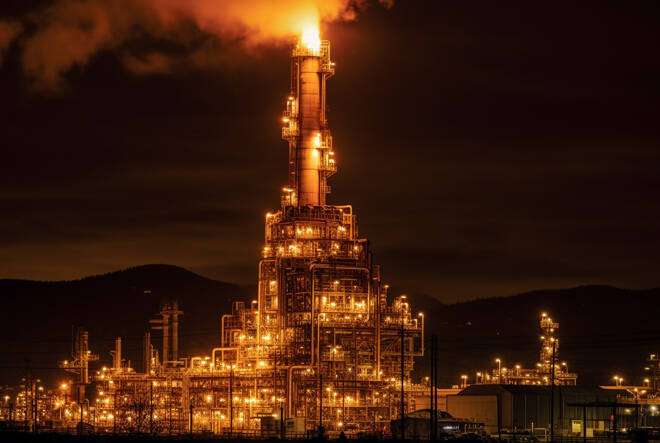Advertisement
Advertisement
Natural Gas Prices Forecast: Pressured by Bearish Weather Forecasts, Storage Surplus
By:
US natural gas futures drop due to ample supply, low demand, and an unexpected storage increase, signaling a bearish outlook.
Highlights
- Milder weather, high supply pressure natural gas futures.
- Unexpected storage increase, record production levels reported.
- Bearish market sentiment as front-month futures see major drop.
US Natural Gas Futures Dip Amid Mild Weather and Ample Supply
U.S. natural gas futures are trading lower on Friday, with bearish factors such as milder temperatures and robust production pressuring prices.
Weather and Demand Projections Soften Prices
Forecasts predict a warmer start to December across many parts of the U.S., suggesting lighter-than-normal demand which contributes to the softening of natural gas prices. The expectation of colder weather towards the end of the month has not offset the current trend of warming, which is reducing heating-related gas consumption.
Unexpected Storage Build and High Production
The Energy Information Administration (EIA) reported an unexpected increase in natural gas storage, countering the typical seasonal decline and indicating low heating demand. Simultaneously, natural gas production in the Lower 48 states hit a record high, with November averages surpassing previous months, although there’s a slight drop in daily output recently.
Supply Outpacing Demand Leads to Price Drops
Increased production and a significant storage surplus compared to the five-year average suggest a well-supplied market. Demand, including exports, is expected to fall next week, further contributing to the downward pressure on prices.
Market Sentiment and Future Outlook
The current market sentiment leans bearish, with the front-month futures witnessing their most significant monthly drop since January. Record production levels and substantial storage are leading traders to lower their expectations for price spikes in the upcoming winter months, with many believing that the peak may have occurred in November.
Technical Analysis
The current daily price of natural gas is 2.766. This price is positioned above the 200-day moving average of 2.620, indicating a longer-term bullish trend. However, the price is below the 50-day moving average of 3.067, which suggests a bearish trend in the shorter term. This positioning between the two moving averages indicates mixed sentiment in the market.
Regarding resistance and support levels, the current price is below the minor resistance level of 2.838 and the main resistance level of 3.002. This suggests that these levels might act as barriers to upward price movement in the near term. The absence of specified support levels means that if the price continues to drop, there might be less immediate support to halt the decline.
Overall, the market sentiment for natural gas is mixed. The position above the 200-day moving average suggests a bullish outlook in the longer term, but the current price being below the 50-day moving average and key resistance levels indicates bearish tendencies in the short term. The market’s direction going forward will likely depend on whether it can break through the immediate resistance levels or if it will retreat further from these points.
About the Author
James Hyerczykauthor
James Hyerczyk is a U.S. based seasoned technical analyst and educator with over 40 years of experience in market analysis and trading, specializing in chart patterns and price movement. He is the author of two books on technical analysis and has a background in both futures and stock markets.
Advertisement
